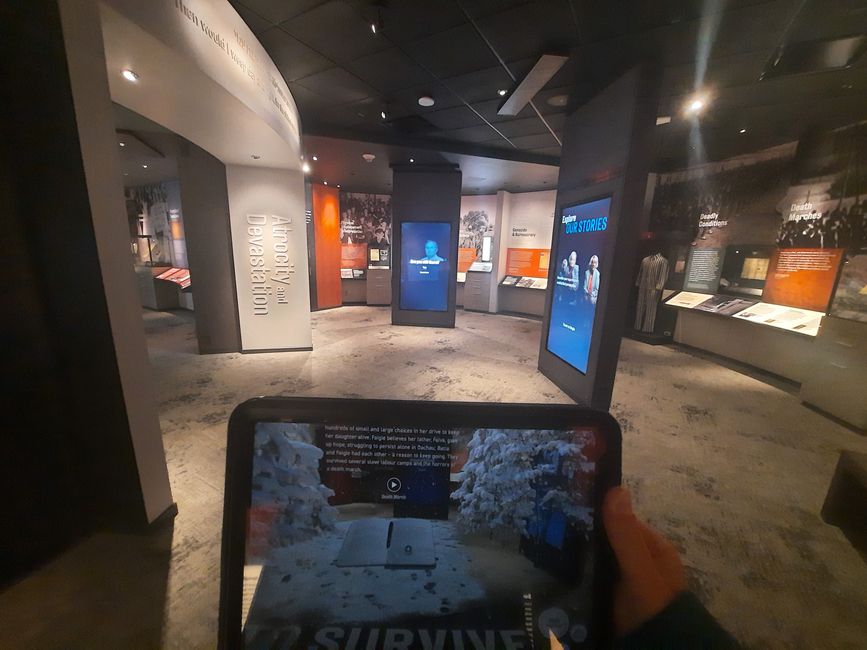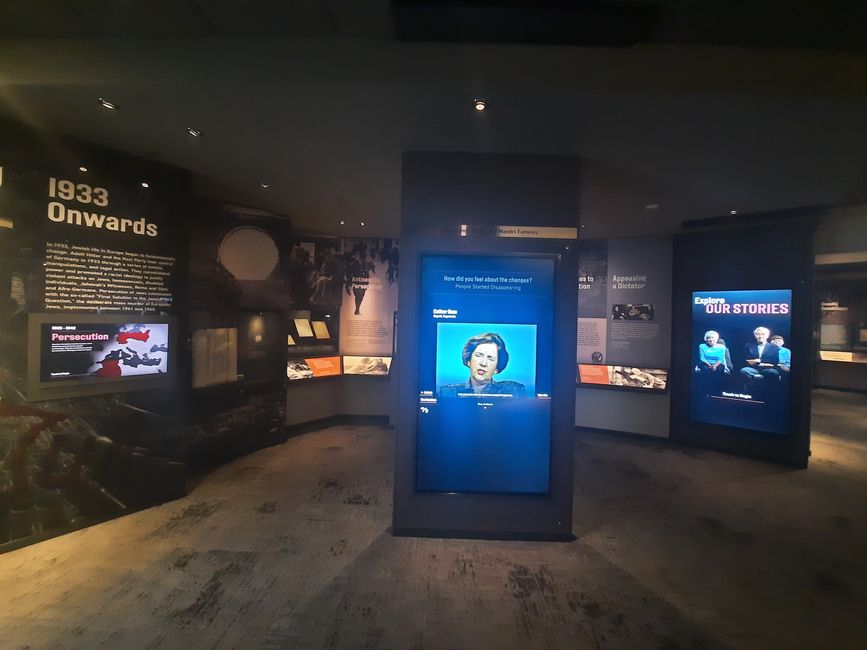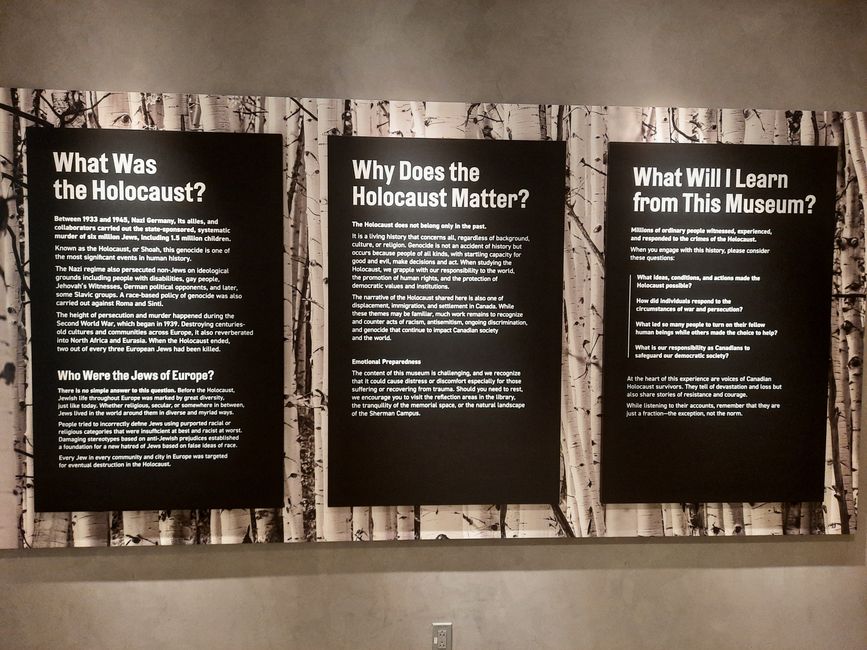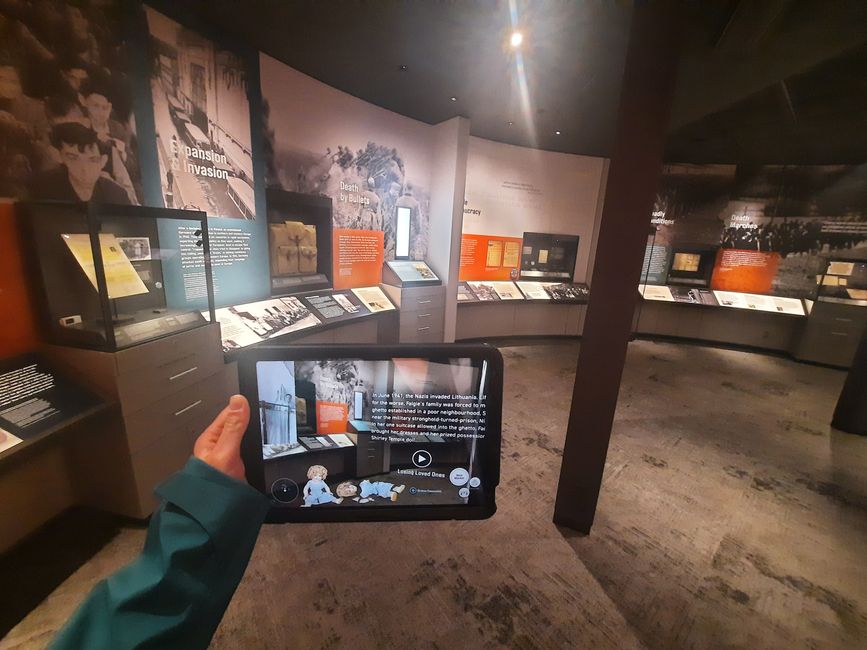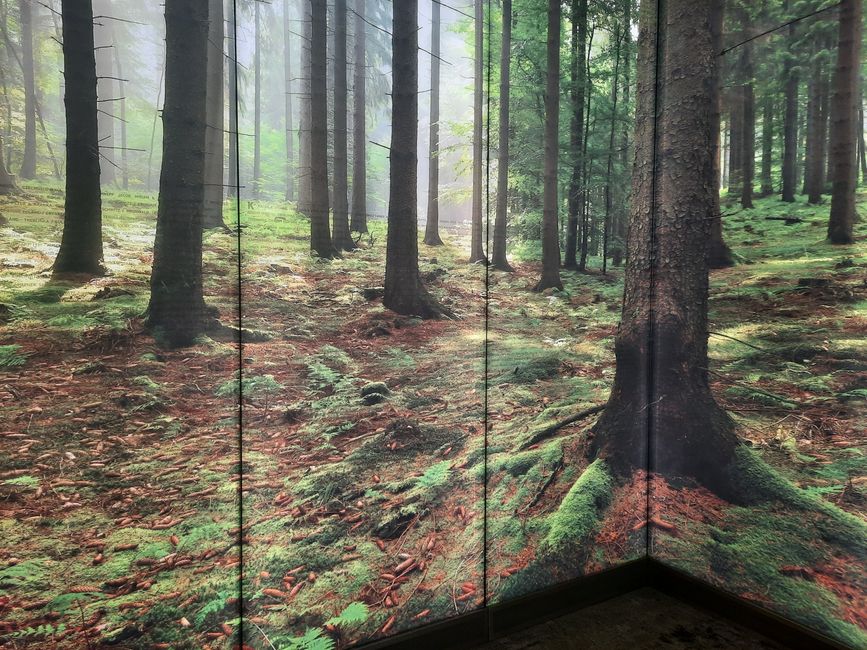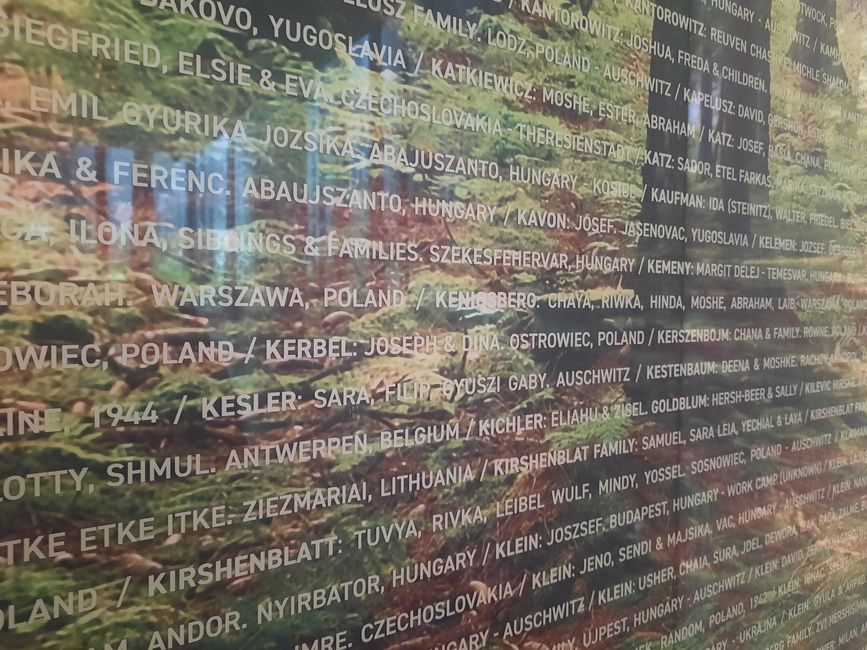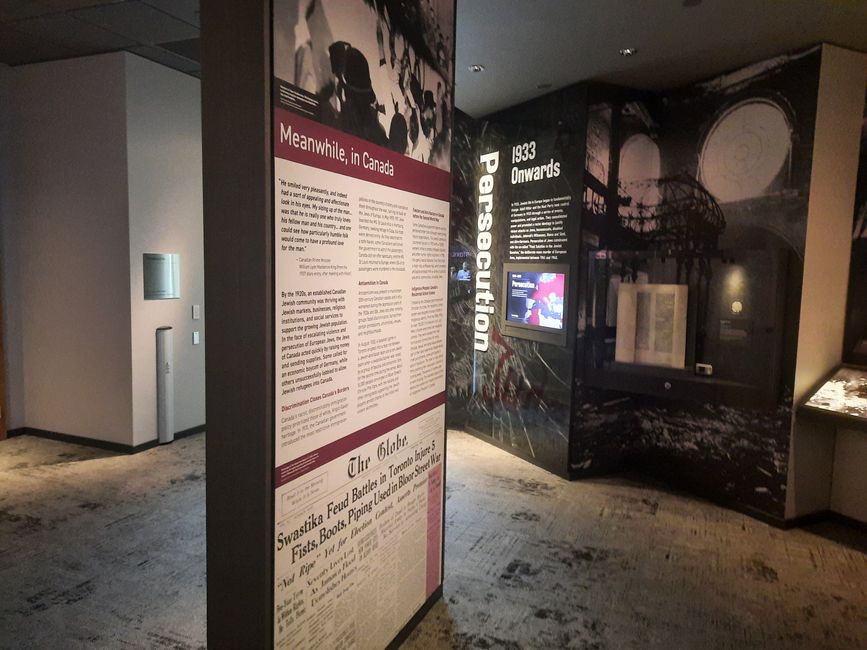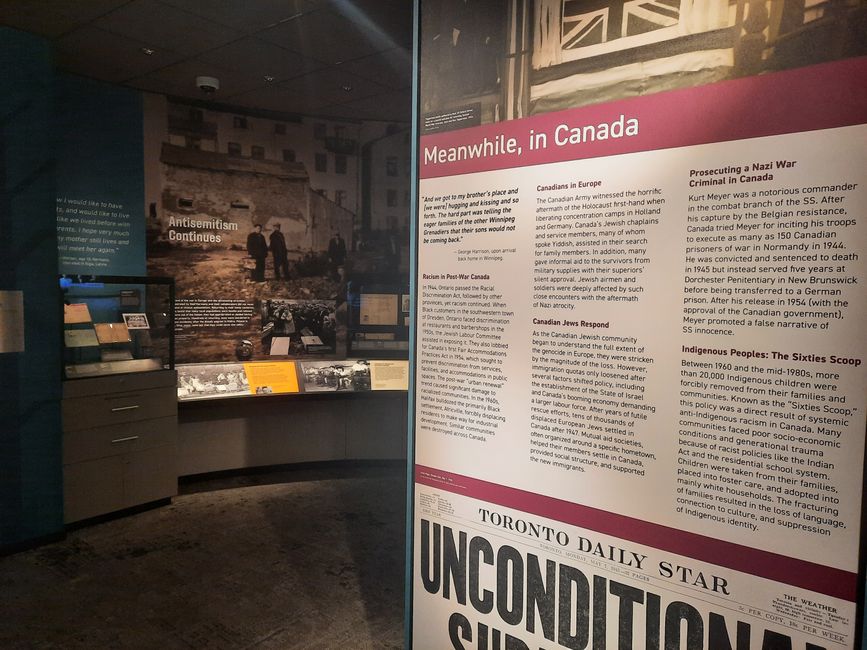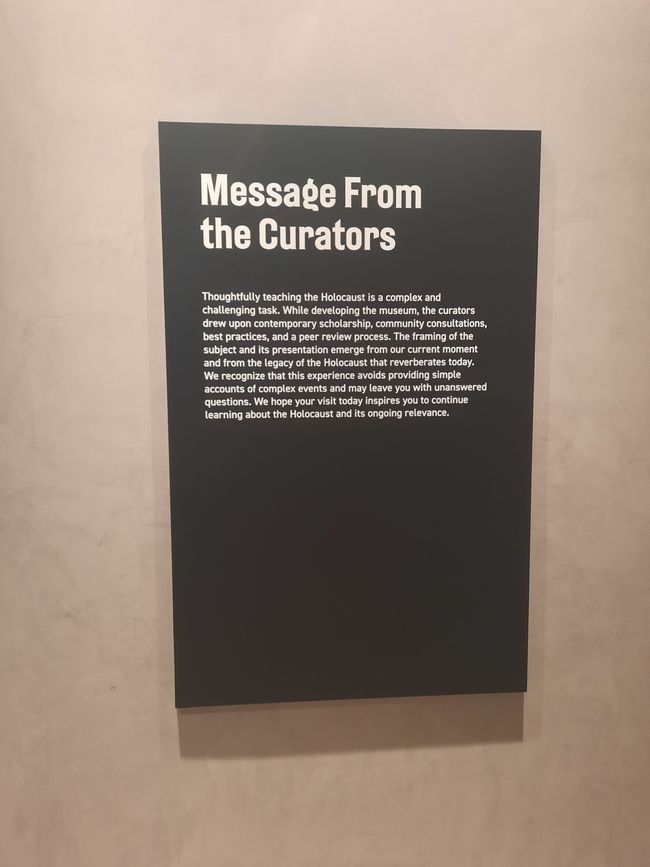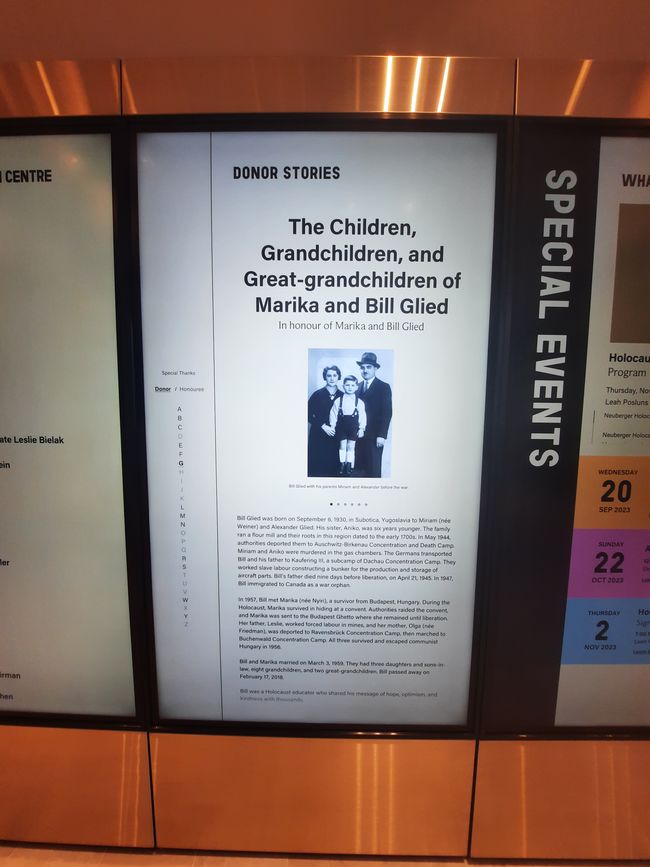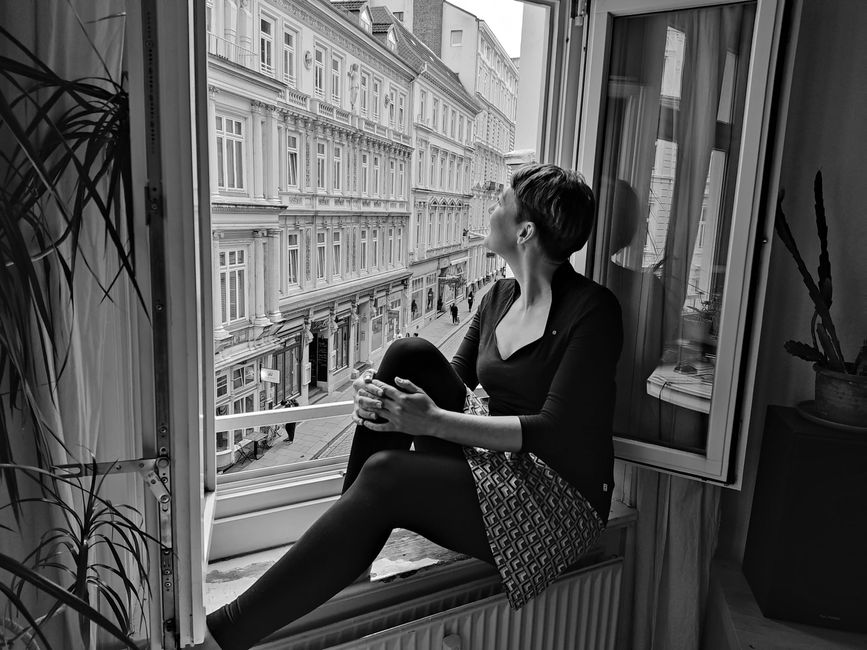
Mit Geschichte(n) um die Welt
vakantio.de/mitgeschichteumdiewelt
Toronto Holocaust Museum
Ishicilelwe: 25.07.2023
Bhalisela i-Newsletter
The Toronto Holocaust Museum is probably the newest of its kind worldwide. It was opened just over a month ago, at the beginning of June 2023. The new permanent exhibition there was very high on my 'must-see' list.
The museum is a bit further out, outside downtown Toronto. It takes me a whole 90 minutes from my neighborhood to get there. But that's also due to public transportation and the North American penchant for roads, highways, and cars. By car, it's a 40-minute drive. So once again, I'm using a ride-sharing service to chat with the drivers. Somehow, I always end up with male drivers - it was the same in the USA in 2021/22. The conversations are often fascinating, and many drivers not only work for Uber or Lyft but also have other jobs to do. The drivers are often very talkative. In the USA, I learned a lot about the country and life there through the drivers, so if it's much easier to go by car, I'm happy to use a ride-sharing service, even if it's more expensive.
But now to the Toronto Holocaust Museum. The facilities are located in the Jewish Community Center. Sports hall, café, offices, and the museum in the middle, it is also designed architecturally. The Holocaust Museum in the midst of today's diverse Jewish life in Toronto. It's summer vacation in Canada, and various holiday programs are running, so it's not unpleasantly loud, but there is a certain background noise, and silence is probably never really present here. Also, the whole Jewish center smells like freshly baked cookies - there is good coffee and something to eat in the lobby.
The Toronto Holocaust Museum is non-governmental and was mainly built with donations. That's why, in addition to an approximately two-meter-high video station with short clips of survivors, the visitors are greeted by a digital wall with short stories of the donors and their reasons for financial support.
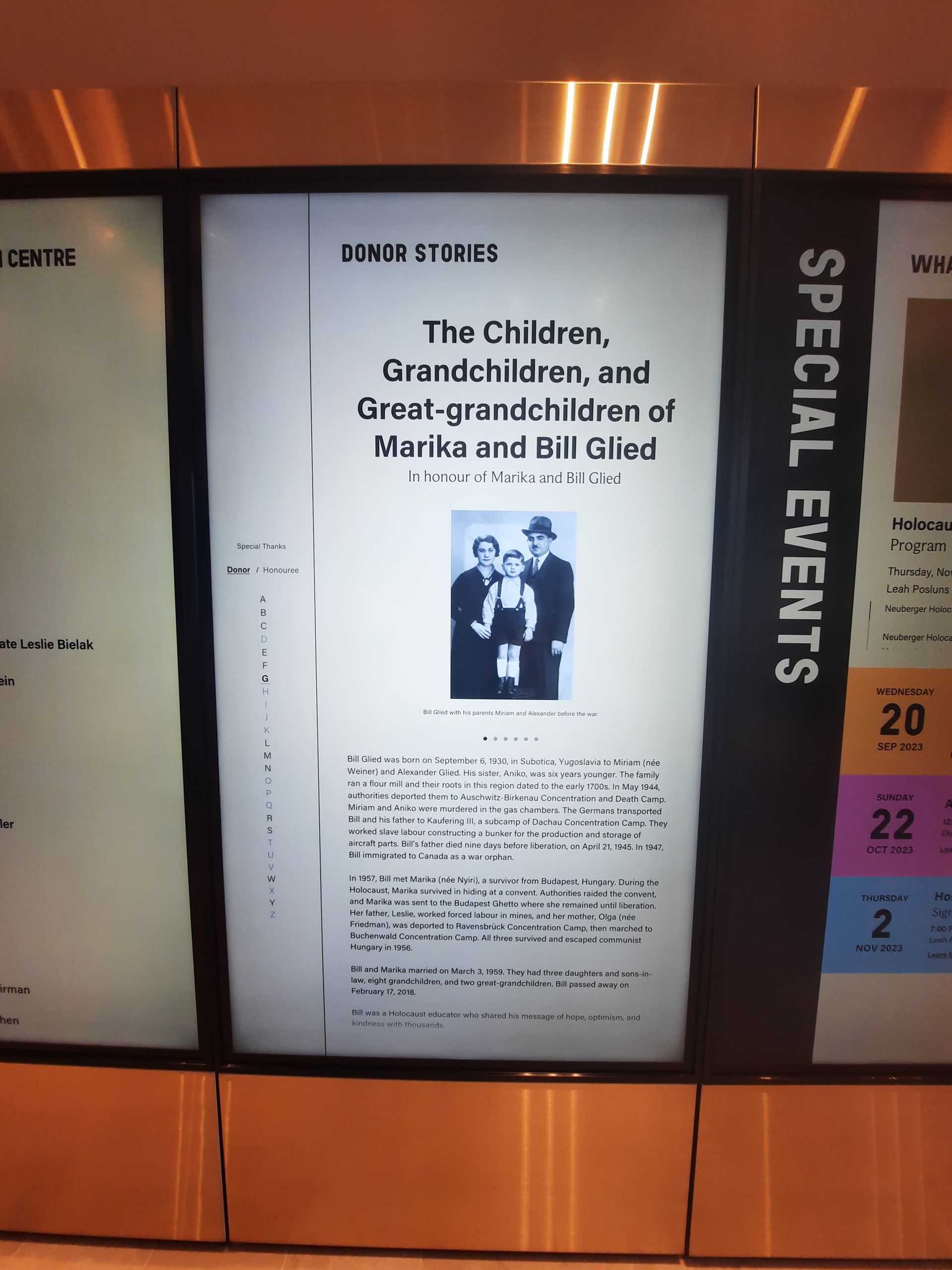
The core of the exhibition are the voices of the survivors, who are presented prominently in the four small sections.

The video stations are very well done, with diverse topics and very appealingly designed, and they are also nice and short, with a maximum length of 1.5 minutes. Only Russian-speaking Jews who came from the Soviet Union were largely missing. In many places, I wondered why more direct voices from and about the Soviet Union were not included - because the Russian-speaking, formerly Soviet Jewish community in North America is large as well. Often, even within Jewish communities, it is criticized that their perspectives are not heard enough. As Rachel, one of the curators, told me, there are enough interviews, but they are mostly in Russian and need to be translated and evaluated for the exhibition. The digital implementation now allows for many things, and these Russian-speaking Jewish voices are a project for the future.
When I write 'new permanent exhibition', it doesn't really capture it completely. In fact, there are several. Each visitor is given a tablet on which additional layers of the exhibition can be made visible using AR, augmented reality. However, according to Rachel, this has nothing to do with the tablets from the Bergen-Belsen Memorial and the implementation there - which have been in use there for many years. The curators in Toronto are not familiar with Bergen-Belsen in this context, and in general, they have more contact with Israeli and Canadian museums, and less contact with institutions in Germany. The idea for the AR implementation came from a graphic design company.
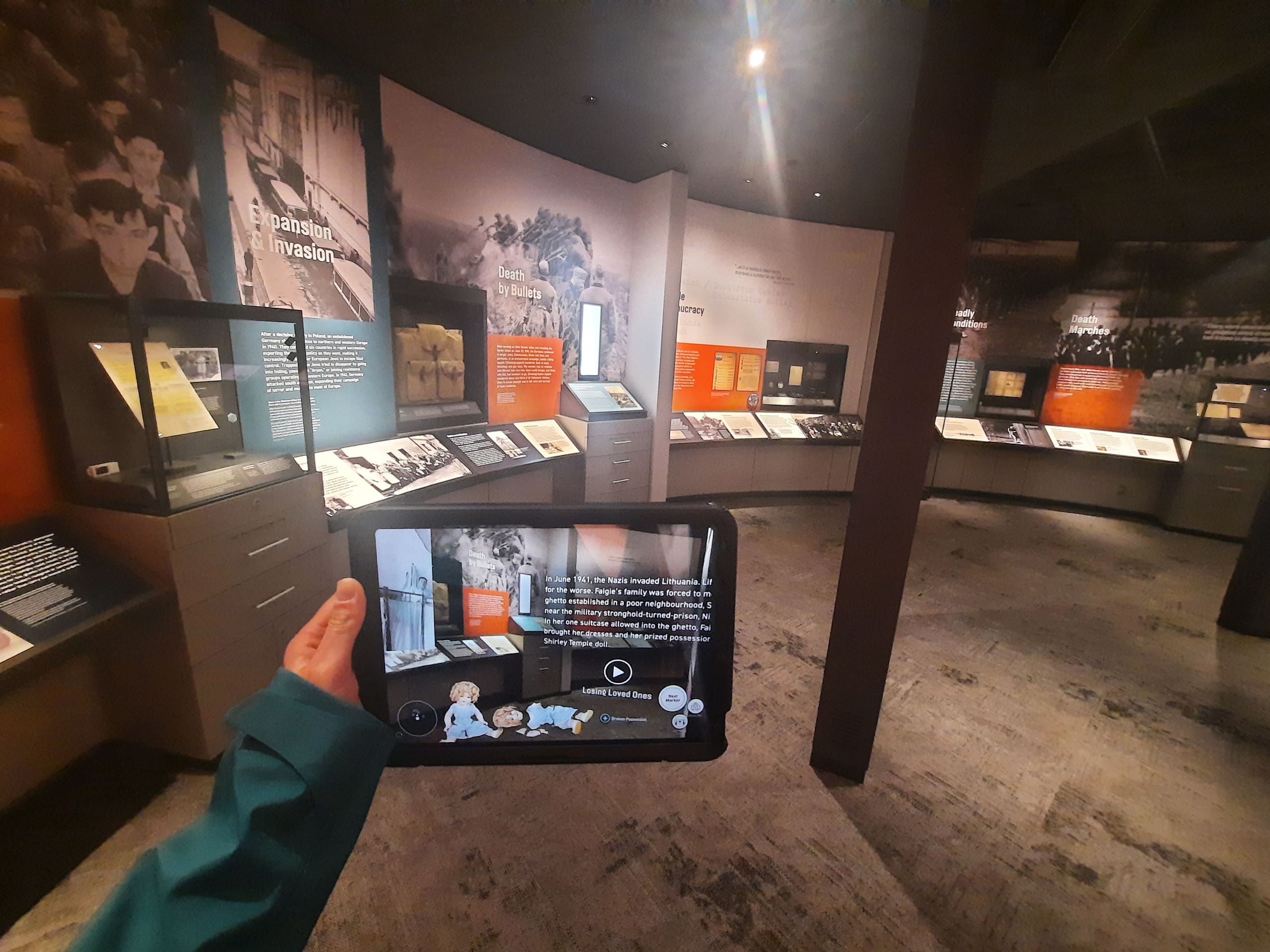
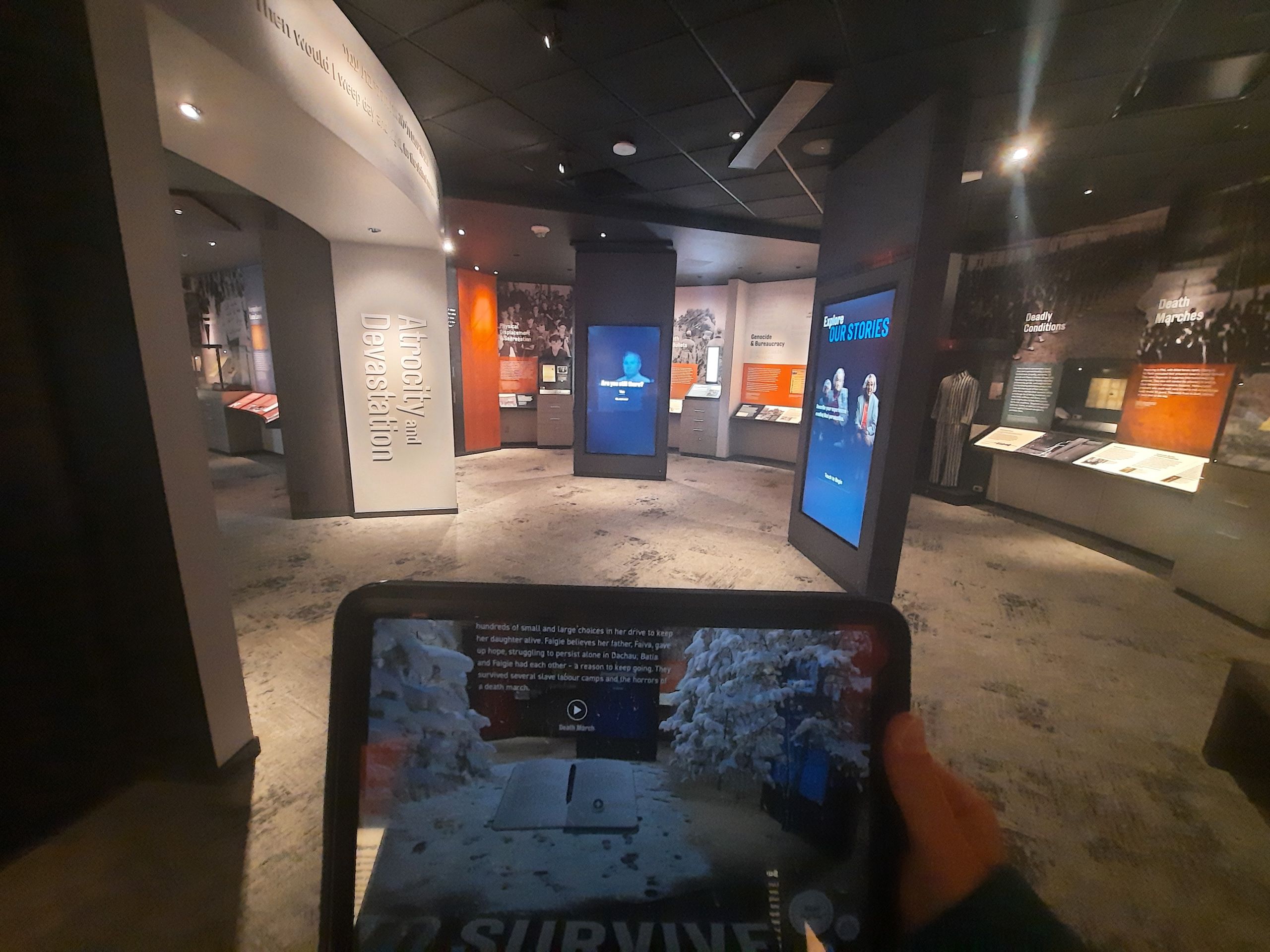
Personally, the additional tablet was interesting but rather distracting for me. It contains additional smaller exhibitions that are an addition to the analog exhibition. Basically, the tour with the tablet is its own tour, independent of the permanent exhibition. Rachel mentioned the first tests with students before the summer holidays and shortly before the official opening. The feedback was very good. But she also added with a smile that she is very biased and can't really evaluate it objectively anymore. According to Rachel's assessment, older visitors in particular prefer the analog exhibition. However, the video stations work very well for everyone. I had the same impression - even though I only observed four other visitors during my visit to the exhibition.
The exhibition is not large: four semi-circular exhibition rooms that give visitors a more intimate learning atmosphere and are intended to encourage them to 'immerse' themselves in the topic. One of the four semi-circular, semi-open rooms is a small cinema. Two films, selected depending on age, are intended to introduce visitors to the topic. A digital implementation by a young colleague of the museum accompanies the video projection.
I found the short conversations with the volunteers who work here interesting. Most of them are children of survivors, and today they are about 65+. On the day I was there, there were four volunteers in the overall rather small exhibition. They were all very interested in talking to visitors, pointing out highlights of the exhibition, or telling their own family stories. It was an exciting encounter, but I can imagine that this can also (additionally) overshadow the actual exhibition. Rachel immediately asked me how I felt about it and what positive and critical feedback had already been received. I liked it, and it fits well with the personal atmosphere that the curators wanted to create.

Especially for someone who is not familiar with Canadian history, I found the additional information 'Meanwhile, in Canada' very exciting, which reported on the situation in Canada during the respective timeline of the exhibition.
As Chief Curator Rachel Liebman also mentioned, the team deliberately created the exhibition in English only. This makes the text manageable. If it were a government Canadian museum, this would not have been possible. However, since English is almost exclusively spoken in Toronto, they only wanted to digitally implement the French version of the exhibition. A larger part of this is still pending. As a non-governmental museum, they can decide this autonomously.
Update:
Visiting museums in Canada is an expensive affair: a ticket easily costs the equivalent of 10 or 15 euros. An ICOM membership for museum staff is also not inexpensive - it costs 100 euros per year in Germany - but it allows free admission to most museums worldwide. The ICOM card is extremely worthwhile in Canada.
Bhalisela i-Newsletter
Phendula

Imibiko yokuvakasha Canada

